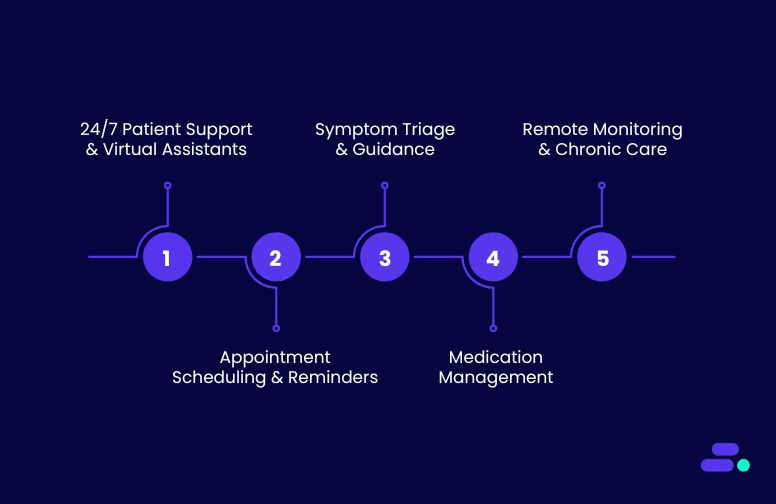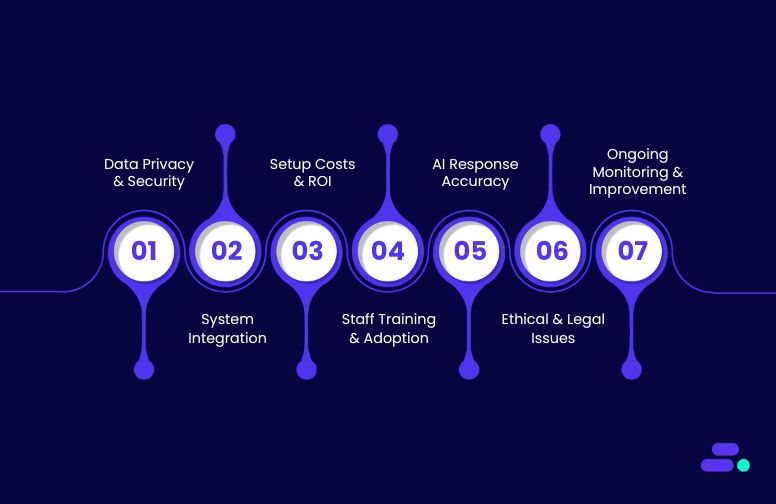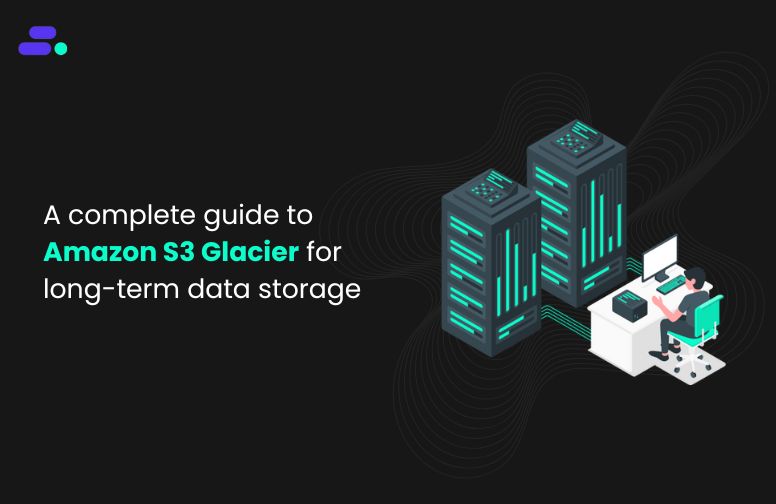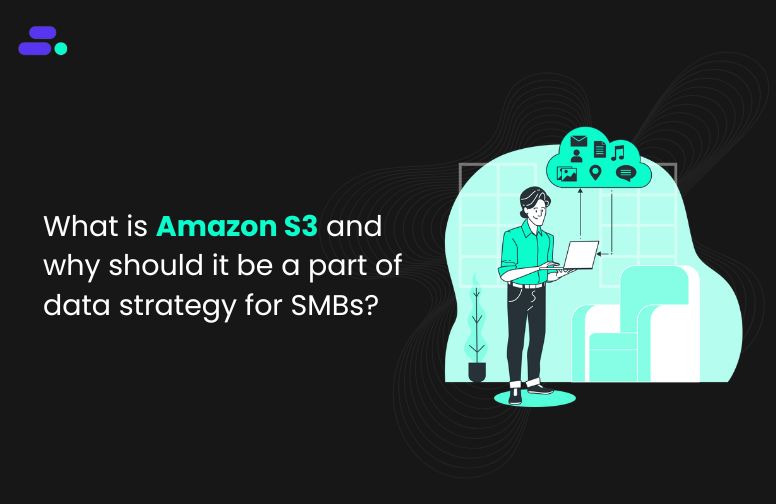This is a div block with a Webflow interaction that will be triggered when the heading is in the view.

Modernize your cloud. Maximize business impact.
Which cloud service provider should a business choose? Their options range from global hyperscalers like AWS, Microsoft Azure, and Google Cloud, to private and hybrid solutions, to specialized vendors serving industries such as healthcare, retail, or finance. Each provider brings its own mix of strengths, trade-offs, and pricing models.
For SMBs, this variety is both a benefit and a challenge. The right provider can deliver scalability, cost predictability, strong security, and modern capabilities such as analytics or AI. The wrong choice, however, can lead to spiraling costs, compliance risks, and limited flexibility.
That’s why choosing the right cloud service provider is no longer a technical decision alone. This article explores the types of providers available and the factors that truly matter, covering how SMBs can position themselves for efficiency, resilience, and long-term competitiveness.
Key takeaways:
- AWS leads with global scale and SMB-focused programs, giving smaller businesses enterprise-level tools.
- Azure excels in Microsoft integration, while Google Cloud offers strong data and AI capabilities.
- Cloud adoption helps SMBs cut costs, scale instantly, and modernize beyond on-prem limitations.
- The right provider depends on business needs, but AWS consistently outperforms in breadth, reliability, and support.
- Working with an AWS partner like Cloudtech ensures a strategic, secure, and growth-ready modernization journey.
Different kinds of cloud service providers available today
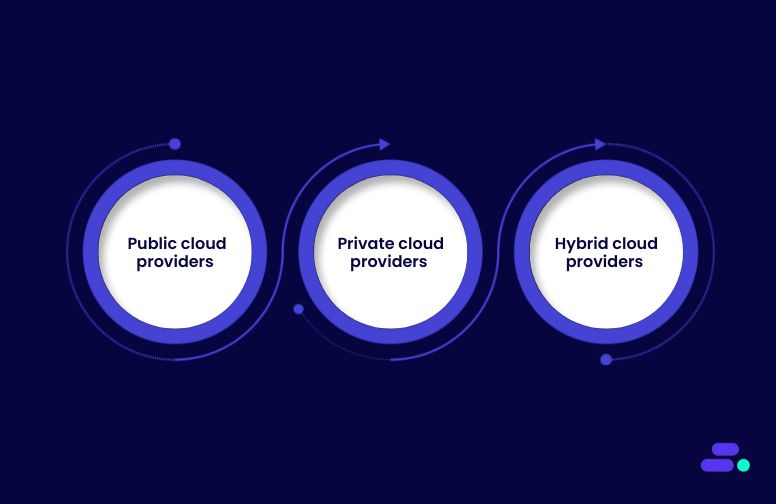
Not all cloud service providers are the same, and that’s why choosing the right one matters. Some, like AWS, Azure, and Google Cloud, focus on giving businesses maximum scalability and a wide range of advanced tools. Others provide private or industry-specific clouds, where control, compliance, or customization take priority.
Hybrid and multi-cloud setups add yet another layer of flexibility, letting businesses spread workloads across providers for better reliability and choice. For SMBs, the key is understanding these options at a high level so they can pick a provider that fits their growth, budget, and security needs rather than getting lost in a one-size-fits-all promise.
1. Public cloud providers (AWS, Azure, GCP)
Public cloud providers are the most common choice for SMBs today. They eliminate the need for businesses to maintain physical servers while offering flexible, scalable infrastructure and advanced services. Among them, three players dominate the global market:
2. Private cloud providers (VMware Cloud, IBM Cloud, OpenStack-based)
Private cloud providers give SMBs more control over their data and infrastructure by offering dedicated environments, either on-premises or hosted. They are often chosen by businesses with strict compliance requirements, sensitive data workloads, or the need for highly customized architectures.
While private clouds may lack the elasticity of public providers, they excel in security, governance, and tailored configurations.
3. Hybrid cloud providers (AWS Outposts, Azure Arc, Google Anthos)
Hybrid cloud providers bridge the gap between on-premises infrastructure and the public cloud, giving SMBs the flexibility to run workloads where they perform best, whether that’s in their own data center, at the edge, or in the cloud.
They’re especially valuable for businesses that require low-latency performance, regulatory compliance, or a gradual move to full cloud adoption.

How to choose the right cloud service provider?
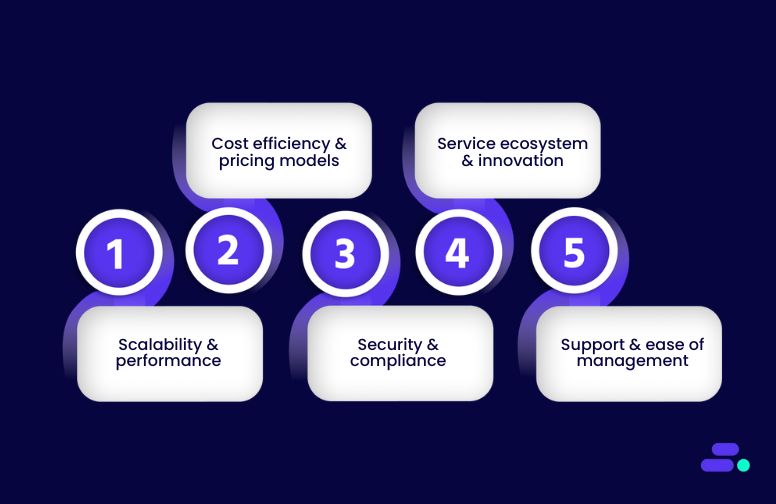
The first step in cloud transition is about finding a reliable partner that can grow with them while keeping costs, compliance, and complexity in check. But with so many providers promising scalability, innovation, and security, how can an SMB cut through the noise and make the right choice? Below are the five most important factors to evaluate, explained in clear, practical terms.
1. Scalability & performance: One of the biggest advantages of the cloud is its ability to scale resources on demand, whether that means handling seasonal spikes in customer traffic, or supporting new applications without upfront infrastructure costs.
- Look for providers that offer auto-scaling features (e.g., AWS Auto Scaling, Azure Virtual Machine Scale Sets) so businesses don’t have to predict workloads in advance.
- Global reach matters, especially if customers are spread across regions, a provider with multiple availability zones and low-latency networks (like AWS or Azure) will help deliver faster, more reliable performance.
- SMBs should also evaluate SLAs (Service Level Agreements) to ensure uptime guarantees match their business-critical needs.
2. Cost efficiency & pricing models: Every SMB knows IT costs can spiral if not managed carefully. Cloud pricing can look straightforward, but hidden charges often come from data transfer, storage tiers, or underutilized resources.
- Compare models like pay-as-you-go (flexible but can spike during heavy usage) versus reserved or spot instances (long-term commitments that bring savings).
- Use tools like AWS Cost Explorer, Azure Pricing Calculator, or GCP’s cost management dashboard to forecast monthly bills.
- Always check for hidden costs. For example, data egress fees when moving data out of the provider’s cloud. These can be surprisingly high for growing SMBs.
3. Security & compliance: For SMBs handling sensitive customer data, security can’t be an afterthought. Cloud providers offer strong baseline protections, but not all are equal when it comes to compliance frameworks and regional data residency.
- Ensure the provider supports relevant regulations like HIPAA (healthcare), GDPR (EU businesses), or FINRA (financial services).
- Look for built-in security services such as encryption at rest and in transit, IAM (Identity and Access Management), and continuous monitoring.
- SMBs without in-house security teams should prefer providers with managed security offerings (like AWS GuardDuty or Azure Security Center) to reduce the operational burden.
4. Service ecosystem & innovation: The right cloud provider should not just meet the business needs today but also open doors for tomorrow’s opportunities.
- SMBs looking at AI, analytics, and automation should evaluate how advanced the provider’s ecosystem is. For example, AWS has a huge suite of AI/ML tools, GCP leads in data analytics, and Azure integrates tightly with Microsoft’s productivity stack.
- Consider the breadth of services, from databases and serverless computing to IoT and DevOps pipelines. A richer ecosystem gives business the flexibility to experiment without constantly switching vendors.
- SMBs should prioritize providers that continue to innovate aggressively, ensuring their tech stack won’t feel outdated in two years.
5. Support & ease of management: Even the best cloud services can feel overwhelming without the right support. SMBs typically don’t have large IT teams, so ease of use and responsive support are crucial.
- Look for providers that offer 24/7 customer support, well-documented resources, and SMB-focused support tiers (AWS has Business Support, Azure offers ProDirect, etc.).
- Evaluate the management console and automation tools, since an intuitive dashboard can save countless hours.
- Training and enablement also matter; providers that offer certifications, workshops, and tutorials help SMBs upskill without hiring large teams.
The takeaway for SMBs: Choosing the right cloud service provider isn’t about who has the biggest brand, it’s about who aligns best with the business’ growth stage, industry, and goals. By weighing scalability, costs, security, innovation, and support, SMBs can make a choice that feels less like a risk and more like an investment in the future.
Why is AWS the most preferred cloud service provider?
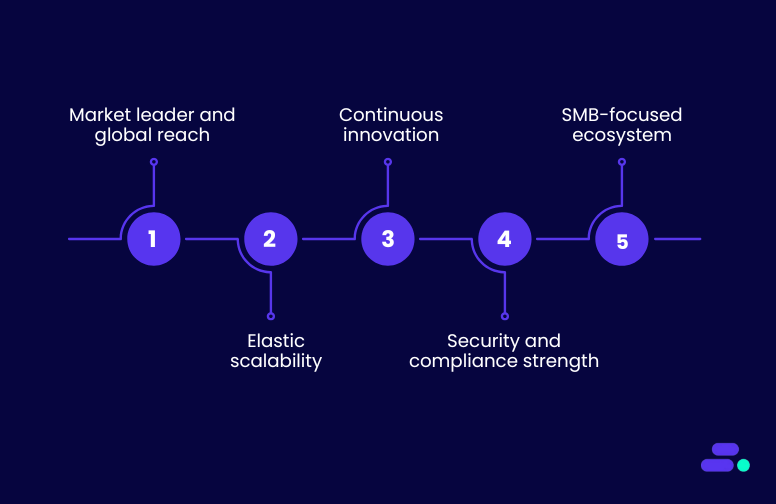
Among all providers, Amazon Web Services (AWS) consistently stands out as the most trusted choice, with the largest market share of 29%. With its global infrastructure, broad ecosystem of services, and SMB-focused initiatives, AWS gives smaller businesses the tools once reserved only for enterprises, without overwhelming complexity or cost.
The advantages of AWS for SMBs:
- Market leader and global reach: AWS offers the widest global infrastructure footprint, far ahead of Azure and GCP. This ensures low-latency access, high availability, and compliance coverage in virtually any region SMBs operate in.
- Elastic scalability: Unlike Azure, where pricing and scaling can become complex, AWS enables true pay-as-you-go elasticity, so SMBs avoid overprovisioning and only pay for what they need.
- Continuous innovation: While GCP is strong in AI/ML, AWS combines breadth with depth, providing services like Amazon SageMaker, Redshift, and Step Functions that bring advanced AI, analytics, and automation to SMBs with seamless integration into the broader AWS ecosystem.
- Security and compliance strength: AWS maintains the broadest set of certifications (HIPAA, GDPR, SOC, and more). Azure and GCP provide compliance too, but AWS’s scale and maturity make it the most battle-tested for regulated SMB industries like healthcare or finance.
- SMB-focused ecosystem: Beyond the technology, AWS invests directly in SMB success through the AWS Small Business Acceleration initiative and a robust partner network (like Cloudtech). This level of SMB-first support is less emphasized by Azure and GCP, which remain more enterprise-focused.
In short: AWS outperforms competitors by blending global reliability (where Azure lags), innovation at scale (beyond GCP’s niche strengths), and a partner ecosystem designed specifically for SMB growth.

While AWS provides the foundation, navigating its vast ecosystem can feel overwhelming for SMBs with lean IT teams. This is where having an AWS Partner like Cloudtech becomes invaluable.
How does Cloudtech ensure a frictionless move to the cloud?

The fear of downtime, complexity, and disruption can make cloud migration feel daunting. Cloudtech’s approach is designed to remove this friction, making the journey to AWS smooth, predictable, and low-risk.
By combining proven migration frameworks with SMB-focused strategies, Cloudtech helps businesses modernize without interrupting daily operations.
Ways Cloudtech reduces friction in cloud migration:
- Lightweight assessments, zero guesswork: Cloudtech starts with a quick but thorough infrastructure and workload assessment, identifying cost drains, risks, and migration priorities. This ensures a clear roadmap without lengthy audits that slow progress.
- Minimal disruption with proven frameworks: Using AWS-native tools like Migration Hub and Application Migration Service, Cloudtech executes migrations in phases, so workloads transition securely with minimal downtime and no data loss.
- Lift-and-shift plus value-add: For speed, workloads are moved “as-is” where practical, but Cloudtech also enables cloud-native enhancements like analytics, automation, or AI, so SMBs get more than just a lift-and-shift.
- Compliance and resilience built-in: Migration isn’t just about moving workloads, but about upgrading them. Cloudtech bakes in multi-AZ redundancy, backup automation, and compliance controls from day one, avoiding costly retrofits later.
- Post-migration stability and support: The journey doesn’t end at migration. Cloudtech provides ongoing optimization, cost governance, and support, ensuring SMBs can adopt new capabilities at their own pace while keeping systems stable.
With Cloudtech, SMBs don’t just move to the cloud. They get there faster, with fewer roadblocks, and with a future-ready foundation that fuels innovation.
See how other SMBs have modernized, scaled, and thrived with Cloudtech’s support →

Wrapping up
Choosing AWS gives SMBs access to the world’s most trusted cloud platform, with unmatched scalability, a broad service ecosystem, and global reach. Partnering with Cloudtech ensures this move is about modernization. It designs cloud-native architectures that are lean, secure, compliant, and tailored to SMB growth, helping businesses move beyond rigid legacy systems and into a foundation built for efficiency and competitiveness.
With Cloudtech, SMBs gain the freedom to embrace a cloud foundation that fuels efficiency and competitiveness. Connect with Cloudtech today!
FAQs
1. Do cloud providers lock SMBs into long-term contracts?
No. Most providers, including AWS, Azure, and Google Cloud, operate on a pay-as-you-go model. However, businesses can choose reserved or committed plans for bigger discounts. The key is balancing flexibility with cost savings.
2. How does cloud performance differ across providers?
Performance can vary based on regional data center presence, network architecture, and services. For example, AWS has the widest global infrastructure footprint, while Azure has strong enterprise integration, and GCP often shines in workloads needing heavy data analytics.
3. What role does support play when choosing a provider?
Each provider offers different tiers of support, but many SMBs find these costly or complex to navigate. A certified partner like Cloudtech can fill this gap by providing personalized, ongoing support without the enterprise-level overhead.
4. Can different providers be used together (multi-cloud)?
Yes. Many SMBs adopt a multi-cloud approach. For example, using AWS for core infrastructure while leveraging Google Cloud for analytics or Azure for Microsoft integrations. This offers flexibility but requires careful management to avoid complexity.
5. How fast can SMBs get started with a cloud provider?
Technically, provisioning resources is instant. The real timeline depends on migration planning, application readiness, and compliance checks. With expert guidance from partners, SMBs can often go live in weeks rather than months.

Get started on your cloud modernization journey today!
Let Cloudtech build a modern AWS infrastructure that’s right for your business.

